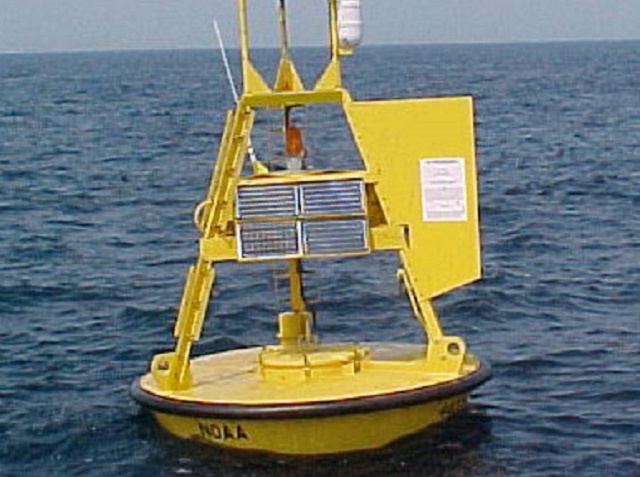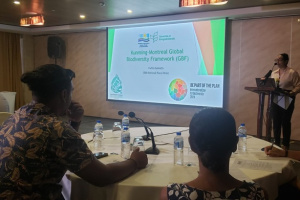Seychelles' 2nd weather buoy means improved data on currents, coastal management
(Seychelles News Agency) - A second weather buoy to help monitor tide movements in Seychelles has been installed, the chief executive of the local meteorological authority said.
The buoy was installed two weeks ago between the main island of Mahe and Silhouette, the third-biggest island, with the technical expertise of an engineer from Met Ocean Service International (MOSI) based in South Africa.
The chief executive of the Seychelles Meteorological Authority, Vincent Amelie, said the buoys will allow the authority to better understand currents in the region, and better manage and monitor coastal areas which are often affected by erosion or man-made developments.
“Before we were using what we call proxy data. We got information on wind movement, so we predicted the movement of sea currents. But now these buoys will give us a more accurate prediction,” says Amelie.
The first buoy which was installed two years ago is between Mahe and Fregate, located 55 km east of the main island.
Seychelles has two trade winds, the southeast monsoon from May to September when the wind is stronger, and the northwest monsoon from October to April.
Amelie added that the currents in the Seychelles’ waters vary in different locations and that “the buoys will allow us to have real-time information that can be analysed in our met models. This will allow us to be more effective if there is an oil spill or a boat lost at sea.”
The principal engineer of the authority, Nelson Lalande, said that data from the buoys can be collected via radio wave links or Global System for Mobile (GSM) communication.
The data collected will be very technical and will be given to various maritime related organisations such as Seychelles Maritime Safety Authority (SMSA), Port Authority, the Seychelles Fishing Authority, Island Development Company and Coastguard. The data will also be available on the SMA website.
The new buoy which cost over $75,000 (SCR 1 million) has been funded by the Monitoring for Environment and Security in Africa (MESA), a project funded by the European Union.
Since both buoys are positioned within the inner islands of Seychelles, an archipelago in the western Indian Ocean, it will not be effective in detecting Tsunamis.
Amelie believes that focusing on marine meteorology will be a significant advancement for the authority and for Seychelles as it strives to build its blue economy.
“We now want to move towards other areas that are important and has economic benefits for the country which is marine. We need to act to safeguard this sector,” he said.






